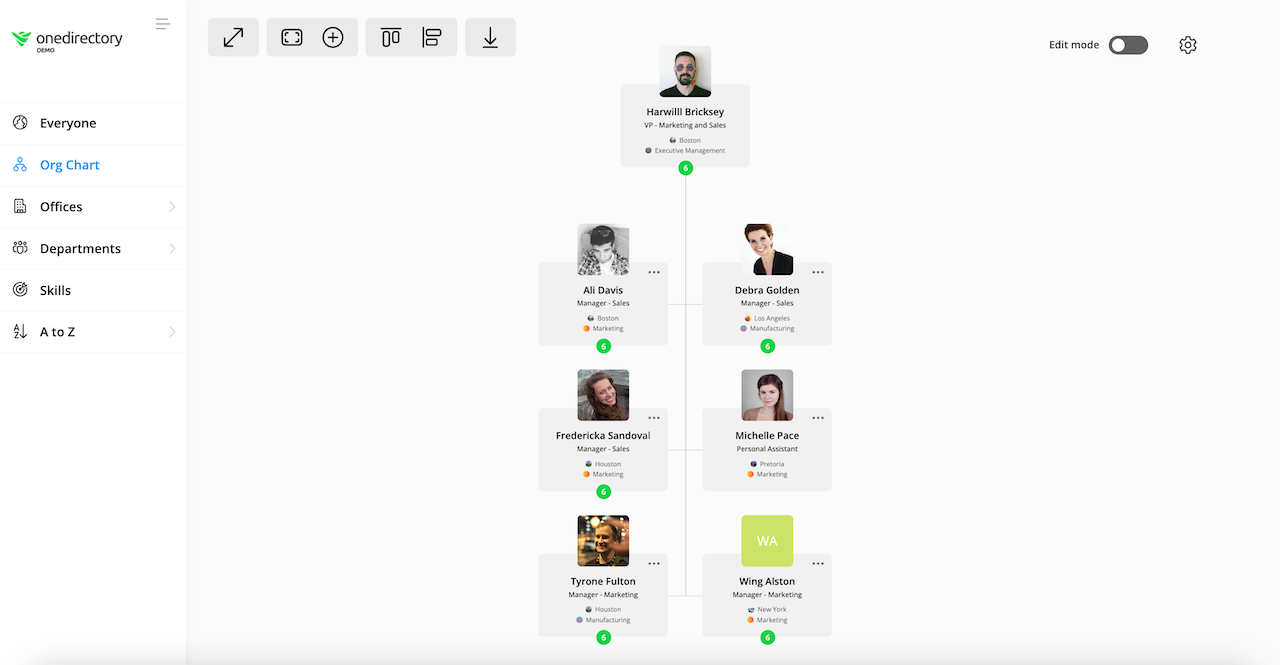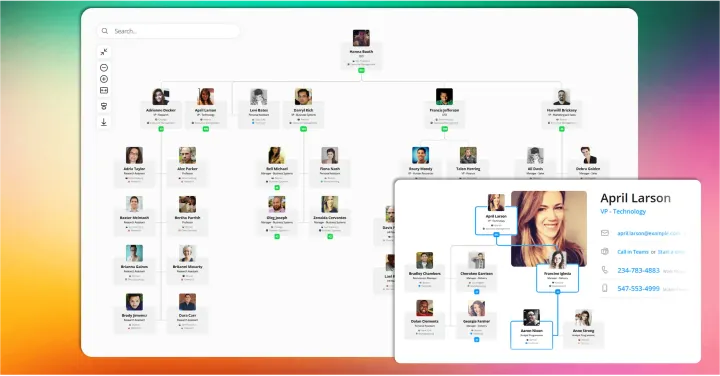Don't Overlook Your Span of Control: Everything You Need To Know!
Discover the secrets of effective management with our guide on understanding span of control in business. Learn how to optimize team performance & productivity.

If you manage people, you've probably grappled with questions around your "span of control". Should you emulate Tim Cook's 17 direct reports as Apple CEO? Or is five or six a more reasonable number to maintain quality relationships and output?
This issue comes up in every organization, yet there are no easy answers.
Conventional HR wisdom points to the ideal managerial span between 5 and 15 based on factors like role complexity and employee capability. But even within that range, there is ample debate.
So let's explore the span of control in business and why it matters.
What is a Span of Control in Business
The span of control refers to the number of employees directly reporting to a manager. It defines a manager's breadth of oversight. For example, a front-line supervisor may oversee 10-15 direct reports, while a senior executive may have 5-8 direct reports.
Wider spans mean managers have more reports, while narrower spans mean fewer reports per manager. There are tradeoffs to both approaches.
The right span of control balance heavily impacts how supported, motivated, and productive employees can be. That's why determining the ideal number of direct reports per manager level is important, though complex. It influences communication flow, individual attention managers can provide, and organizational resource requirements
Ultimately, the span of control shapes the chain of command and accountability at each management layer. Getting the balance right for specific teams and roles helps ensure managers can provide adequate direction, coaching, and development.
Wide vs. Narrow Span of Control: Finding the Sweet Spot
Ever heard the phrase, "Too many cooks spoil the broth?" It's an old saying, but it applies to modern management styles as well.
Let's look at the two different types of span of control in business, the wide span of control, and the narrow span of control, and how each impacts your organization.
The Wide Span of Control: Freedom or Chaos?
Imagine you're on a team where your manager oversees a dozen people. This is the wide span of control, where a manager supervises a large number of employees.
Sounds great, right?
Less micromanagement, more autonomy. But, let's dig deeper.
Pros of a Wide Span of Control
- Empowerment Galore: With less oversight, employees often feel more empowered. They're trusted to make decisions, which can boost morale and innovation.
- Cost-Effective: Fewer managers mean lower overhead costs. It's a lean, mean, cost-efficient machine.
- Streamlined Communication: There's less of the dreaded "telephone game" effect. Fewer layers of management mean messages travel faster and with less distortion.
Cons of a Wide Span of Control
- Overwhelmed Managers: Picture a plate-spinning circus act. Managers with too many direct reports can struggle to give adequate time and attention to each employee.
- Training and Development Gaps: With so many people to oversee, providing individualized training and development can be challenging. Employees might feel like they’re left to fend for themselves.
- Inconsistent Oversight: Less supervision can sometimes lead to inconsistent performance standards and accountability. It’s easy for things to slip through the cracks.
The Narrow Span of Control: Precision or Bottleneck?
Now, let's flip the script. A narrow span of control means a manager supervises a small number of employees. It’s the managerial equivalent of having a personal trainer rather than attending a group fitness class.
Pros of a Narrow Span of Control
- Personal Attention: Managers can devote more time to each employee, providing tailored feedback and support.
- Better Oversight: With fewer people to manage, it's easier to maintain high-performance standards and accountability. No one can hide in the shadows.
- Focused Development: Employees often receive more targeted training and development opportunities, accelerating their growth and skill acquisition.
Cons of a Narrow Span of Control
- Higher Costs: More managers mean higher salaries and administrative costs. It's a pricier setup.
- Potential for Micromanagement: With fewer direct reports, managers might hover more, leading to decreased autonomy and possible frustration among employees.
- Slower Decision Making: More layers of management can slow down the decision-making process. It’s like trying to pass a beach ball through a series of hula hoops.
Finding the Sweet Spot: It's All About Balance
So, which is better? Wide or narrow span of control? The truth is, it depends. The ideal span of control varies by industry, company size, and organizational culture.
Here are a few tips to help find the sweet spot:
- Assess Your Team: Look at the skills and experience of your employees. Highly skilled, independent workers might thrive under a wide span of control, while less experienced employees might need the guidance that comes with a narrow span.
- Evaluate Managerial Skills: Consider the capabilities of your managers. Those with strong leadership and multitasking skills can handle a wider span of control effectively.
- Industry Standards: Some industries naturally lean towards one model. Tech startups often favor a wide span of control to foster innovation, while industries with strict compliance requirements might benefit from a narrow span.
- Feedback Loop: Regularly seek feedback from both managers and employees. Adjust based on what’s working and what’s not.
Leverage Technology to Maximize Your Span of Control
Digital tools provide an opportunity to maximize the managerial span of control.
Employee management software, messaging apps, project management platforms, employee directory software, automated workflows, and many other technologies amplify a manager’s bandwidth.
Rather than directly overseeing tasks, technology enables you to coordinate at higher levels of abstraction. Your time shifts from tactical oversight to more strategic guidance focused on removing roadblocks and spurring progress.
So when thoughtfully implemented and adopted, technology allows for wider spans of control without the downsides.
Quickly View Your Span of Control in OneDirectory
OneDirectory's interactive organizational chart simplifies understanding your managerial span of control.
To quickly view your direct reports, simply navigate to the main organizational chart, find your org chart card, click the ellipsis in the top right corner, and choose 'Start from here.' This action sets you as the focal point, displaying all employees under your supervision.
Additionally, the platform allows you to explore the management cope of other managers, making it an effective tool for monitoring and balancing the number of direct reports across the organization, ensuring that managers have an optimal number of team members to lead.

The Bottom Line
There is no universal formula that specifies the ideal managerial span of control. Finding the right balance depends enormously on the situation and the specifics of both the work and the workforce.
But by considering the nature of the work, employee experience levels, natural team structures, and possibilities for technology assistance, you can hone in on spans of control suited to your unique context.
Rather than chasing some mythical magic number, thoughtfully balance the tradeoffs based on what will best empower your people to create value. That’s the mark of an effective modern leader.
Span of Control FAQ
How do you calculate span of control?
Span of control is calculated by dividing the total number of employees a manager supervises by the number of managers. For example, if one manager oversees 10 employees, the span of control is 10.
How do you visualize your span of control?
You can visualize span of control using organizational charts, which display managers and their direct reports. Tools like OneDirectory make it easy to create and analyze these charts.
Which factors help determine a manager's span of control?
Key factors include the complexity of tasks, the experience level of employees, the manager’s leadership style, and the use of tools or technology to streamline oversight.
What is the optimal span of control?
The optimal span of control varies by industry and organizational needs but typically ranges from 5 to 15 direct reports per manager, depending on task complexity and team autonomy.


